Music is supposed to be as old as the human being, although we do not have definitive proof.
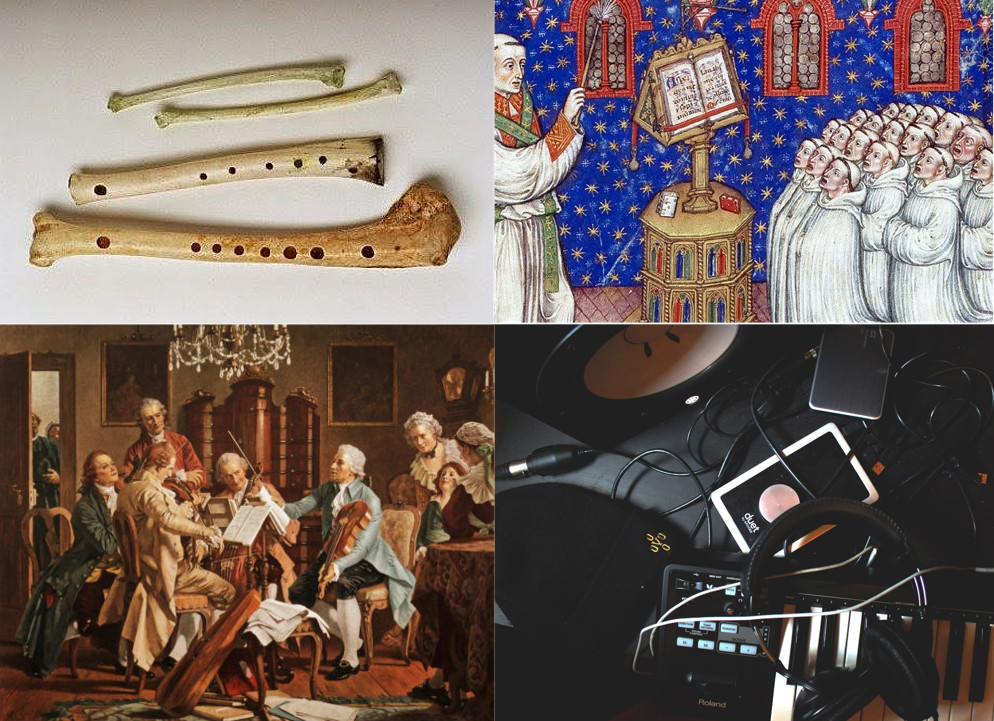 Brief history of music Our vocal ability and the skill of the first humans with tools makes us think that since ancient times something that we could consider music must have been practiced.
Brief history of music Our vocal ability and the skill of the first humans with tools makes us think that since ancient times something that we could consider music must have been practiced.
Historical rankings
When we want to organize events that cover such a large period of time, the first obstacle we encounter is the criteria we must use to classify them. What aspect of music is the most convenient or descriptive to describe the evolution of music through the centuries? Since music is not an isolated event in our lives and is closely related to social events, ideologies, the economy and everything that makes up our existence, in short, when it comes to establishing periods and eras where music music has remained within, let's say, stable parameters, there has been discussion and proposals about what would be the best classification to explain its history.
The history of music
As we do not want to get into these controversies, we are going to detail a brief introduction to the history of music, in this way: 1. Prehistory: Music prior to the historical documents that have come down to us. 2. ancient civilizations: Music in Mesopotamia, the East, classical Greece, the Roman Empire and other civilizations. 3. The Middle Ages: Music between the 12th and 15th centuries, approximately. Minstrels, troubadours, monks. 4. The Renaissance: The music dates back to the second part of the 15th century and the 16th century, approximately. 5. The common practice: The period dominated by the tonal system in music. The Baroque, Classicism and Romanticism, among others. 6. The contemporary age: Technological revolutions and music. The emergence of what we know as modern popular music.
1. Musical Prehistory
Before what we call antiquity, before the documentary vestiges and traditions that have come down to us in one way or another, did the first humans make music? We don't have much evidence that this was the case, but we also don't have much evidence that it was not the case. In some archaeological sites Clues have been found of what could have been rudimentary musical instruments.
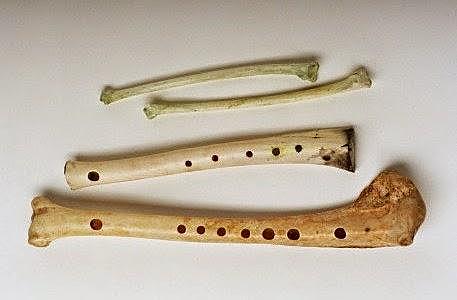 Bones turned into flutes Carefully drilled bird bones could have been ancestors of the flutes we know today. Or the scrapers, scratched bones that could produce very specific percussive sounds, not like an accident or chance. Another source that makes us think of an important relationship between those men and women of prehistory with music is the mythology. Virtually all mythological traditions in the world have figures that symbolize or are related to music. Orpheus, a music teacher, in classical Greece, for example. Bragi, with his golden harp, in northern European mythology. Or Huehuecóyotl, the old coyote, in Mexican mythology as the god of the arts, lord of music, ceremonial dance and guide of adolescence. All this and, furthermore, the very capacity of the human body itself with its voice and percussive abilities do not leave much room for having many doubts about the interest and practice of musical activities in those remote times.
Bones turned into flutes Carefully drilled bird bones could have been ancestors of the flutes we know today. Or the scrapers, scratched bones that could produce very specific percussive sounds, not like an accident or chance. Another source that makes us think of an important relationship between those men and women of prehistory with music is the mythology. Virtually all mythological traditions in the world have figures that symbolize or are related to music. Orpheus, a music teacher, in classical Greece, for example. Bragi, with his golden harp, in northern European mythology. Or Huehuecóyotl, the old coyote, in Mexican mythology as the god of the arts, lord of music, ceremonial dance and guide of adolescence. All this and, furthermore, the very capacity of the human body itself with its voice and percussive abilities do not leave much room for having many doubts about the interest and practice of musical activities in those remote times.
2. Music in the ancient world
China, Egypt, Mesopotamiathe Classical Greece or the Roman empire They had a rich cultural life and, among those arts, music also stood out. Whether it was with a ceremonial, religious role or as a show of power. Whether as a popular practice in work songs or as support in military campaigns, music was everywhere.
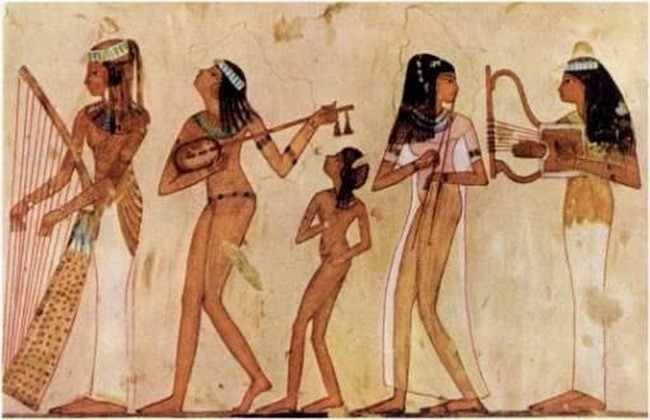 Music in ancient Egypt In addition, the physical aspect of musical sounds began to be investigated. Pythagoras, for example, in Classical Greece, studied why some sounds sounded better combined with different ones or others and laid the foundations for what we know today as Western harmony.
Music in ancient Egypt In addition, the physical aspect of musical sounds began to be investigated. Pythagoras, for example, in Classical Greece, studied why some sounds sounded better combined with different ones or others and laid the foundations for what we know today as Western harmony.
3. The Middle Ages and music
With the end of the Roman Empire came a dark time. Poverty, wars and diseases caused cultural life to develop especially in the monasteriesthe castles and palaces. The authentic power of those centuries, in Europe, was in the hands of the Popes, the kings and the feudal lords and in those environments most of the musical activity developed. Sacred chants in religious centers, such as the well-known Gregorian chants, developed until polyphony, singing with several voices or different melodic lines, was introduced at the end of the Middle Ages.
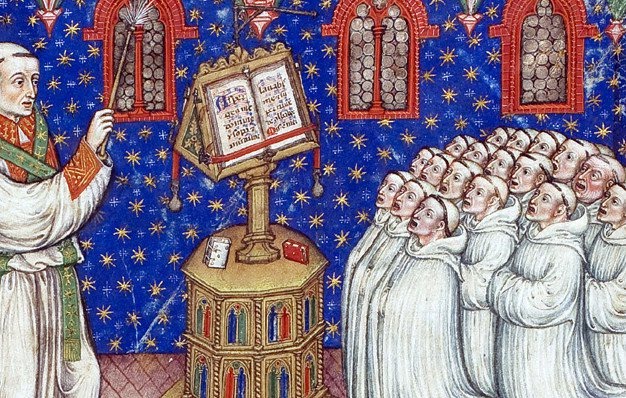 Gregorian chants The courts and castles, especially, with the stately troubadours and the wandering minstrels traveling from village to village with their musical and acrobatic shows, were also refining, in the same way, their way of composing and performing their popular songs during that time. .
Gregorian chants The courts and castles, especially, with the stately troubadours and the wandering minstrels traveling from village to village with their musical and acrobatic shows, were also refining, in the same way, their way of composing and performing their popular songs during that time. .
4. The musical Renaissance
The end of feudalism, the rise of the new bourgeoisie, the implementation of an incipient capitalism, the discovery and colonization of America or the consolidation of the new European states were the scene where what we call the Renaissance emerged. Between the 14th and 16th centuries, a renewed interest in classical Greek culture and the human being and not so much God as a vital reference caused science and the arts to promote a new conception of the world. It began what we know as Modern Age. Musicians, in particular, first in northern Italy and also in Flanders, and later in the rest of the old continent, dared to compose freer and richer works, to break with the ecclesiastical rigidity of the Middle Ages. New innovative musical forms emerged such as the Madrigals and, especially, the Opera.
5. Common practice
After the Renaissance, a new musical idea was consolidated, a harmonic structure that would almost completely dominate the works for at least three centuries: the tonal system. Traditional ecclesiastical harmonic modes were superseded by the clear and hierarchical structure of tonality. The Major and the Minor, supported by the musical theory of the moment, began to organize all the music of that time.
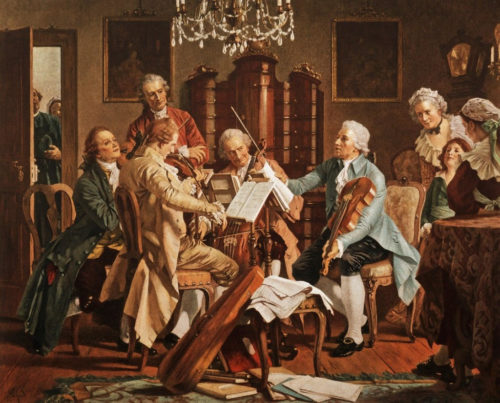 Chamber musicians This period has been called common practice because, really, everyone used this harmonic approach to compose their works, it was common and encompassed three important stylistic currents between the 17th and 19th centuries: Baroquehe Classicism and the Romanticism. This practice, in fact, is still the majority today but, since the appearance of Impressionism and other new musical ideas, other compositional approaches have also had a presence and prominence.
Chamber musicians This period has been called common practice because, really, everyone used this harmonic approach to compose their works, it was common and encompassed three important stylistic currents between the 17th and 19th centuries: Baroquehe Classicism and the Romanticism. This practice, in fact, is still the majority today but, since the appearance of Impressionism and other new musical ideas, other compositional approaches have also had a presence and prominence.
6. Music in the contemporary age
Between the end of the 19th century and the beginning of the 20th century, the industrial revolution brought to music an element unknown until then: the supports of recording and reproduction of audio. The phonograph and gramophone, especially, with their records where music could be recorded and played anywhere, revolutionized listeners' relationship with music. Virtually anyone, suddenly, could have access to recorded music with a small investment which, added to the invention and expansion of radio as a means of mass communication, changed the way sound works were used and consumed.
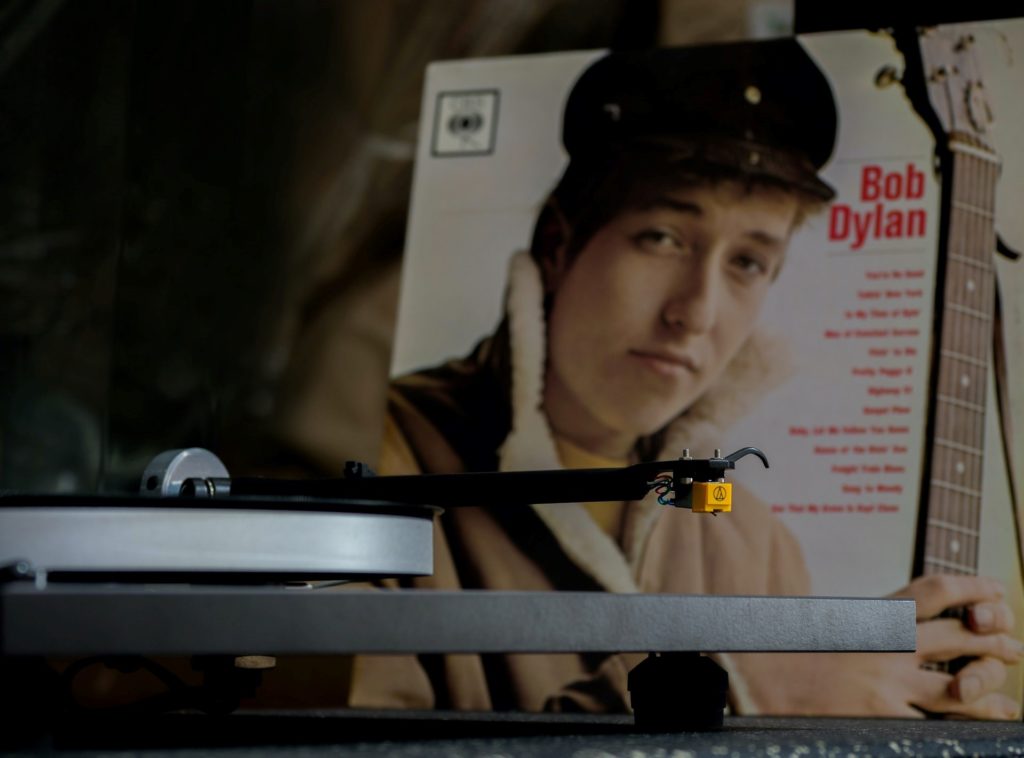 Turntables and discs A great business was also born around those inventions that largely conditioned what and how music was composed. This, together with the changing social conditions of the 20th century, caused a torrent of musical genres that appeared one after another or even at the same time in those decades. Blues, Jazz, Rhythm and Blues, Rock and Roll and many others were exploring the sound possibilities of audio recordings and expressed with their music and lyrics the concerns and dreams of generations of people and human communities.
Turntables and discs A great business was also born around those inventions that largely conditioned what and how music was composed. This, together with the changing social conditions of the 20th century, caused a torrent of musical genres that appeared one after another or even at the same time in those decades. Blues, Jazz, Rhythm and Blues, Rock and Roll and many others were exploring the sound possibilities of audio recordings and expressed with their music and lyrics the concerns and dreams of generations of people and human communities.
Summary
Music, in short, is as old as ourselves. We don't really need to have material evidence about musical practice in prehistory, for example. And the history of music is also the history of songs, of cultured and popular songs, of the daily life of humans throughout time. Both ancient music and modern forms and technology applied to songs and music are manifestations of the same original principle, of an authentic human need, of a thirst that has not yet been quenched.
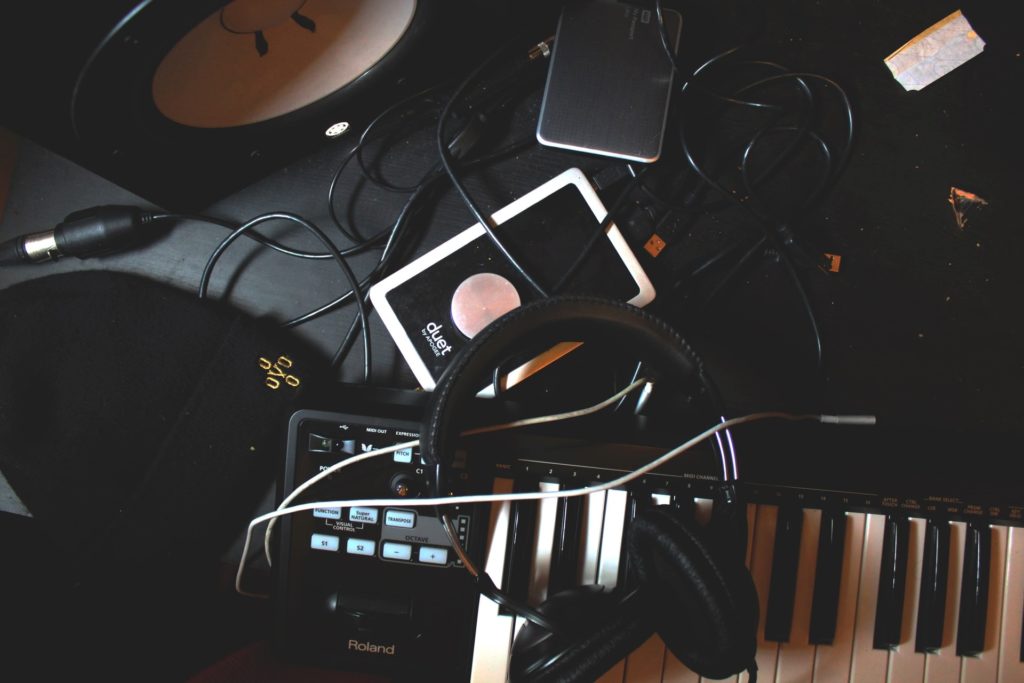 Modern musical devices Those first humans had the ability to produce sounds with their body, with their voice, using objects in their environment. They undoubtedly had expressive needs, no matter how rudimentary or imperfect. They had to feel fear, sorrow, joy, in some way. Those two abilities, feeling and being able to create sounds, are more than enough to make music of some kind. What's more, those are the only requirements, even today, absolutely necessary for this. The rest is accessory. We can sing and simply make up melodies, write our songs. We can hit our hands or a surface and generate a rhythm. That's music. That and much more. History is full of examples. Let's move on. Let's make more music. #mailpoet_form_3 .mailpoet_form { } #mailpoet_form_3 .mailpoet_column_with_background { padding: 10px; } #mailpoet_form_3 .mailpoet_form_column:not(:first-child) { margin-left: 20px; } #mailpoet_form_3 .mailpoet_paragraph { line-height: 20px; margin-bottom: 20px; } #mailpoet_form_3 .mailpoet_segment_label, #mailpoet_form_3 .mailpoet_text_label, #mailpoet_form_3 .mailpoet_textarea_label, #mailpoet_form_3 .mailpoet_select_label, #mailpoet_form_3 .mailpoet_radio_label, #mailpoet_form_3 .mailpoet_checkbox_label, #mailpoet_form_3 .mailpoet_list_label, #mailpoet_form_3 .mailpoet_date_label { display: block; font-weight: normal; } #mailpoet_form_3 .mailpoet_text, #mailpoet_form_3 .mailpoet_textarea, #mailpoet_form_3 .mailpoet_select, #mailpoet_form_3 .mailpoet_date_month, #mailpoet_form_3 .mailpoet_date_day, #mailpoet_form_3 .mailpoet_date_year, #mailpoet_form_3 .mailpoet_date { display: block; } #mailpoet_form_3 .mailpoet_text, #mailpoet_form_3 .mailpoet_textarea { width: 200px; } #mailpoet_form_3 .mailpoet_checkbox { } #mailpoet_form_3 .mailpoet_submit { } #mailpoet_form_3 .mailpoet_divider { } #mailpoet_form_3 .mailpoet_message { } #mailpoet_form_3 .mailpoet_form_loading { width: 30px; text-align: center; line-height: normal; } #mailpoet_form_3 .mailpoet_form_loading > span { width: 5px; height: 5px; background-color: #5b5b5b; }#mailpoet_form_3{border: 1px solid #fcb900;border-radius: 40px;text-align: center;}#mailpoet_form_3 form.mailpoet_form {padding: 20px;}#mailpoet_form_3{width: 70%;}#mailpoet_form_3 .mailpoet_message {margin : 0; padding: 0 20px;}#mailpoet_form_3 .mailpoet_paragraph.last {margin-bottom: 0} @media (max-width: 500px) {#mailpoet_form_3 {background-image: none;}} @media (min-width: 500px) { #mailpoet_form_3 .last .mailpoet_paragraph:last-child {margin-bottom: 0}} @media (max-width: 500px) {#mailpoet_form_3 .mailpoet_form_column:last-child .mailpoet_paragraph:last-child {margin-bottom: 0}} Please leave this field emptyDo you write songs or would you like to?
Modern musical devices Those first humans had the ability to produce sounds with their body, with their voice, using objects in their environment. They undoubtedly had expressive needs, no matter how rudimentary or imperfect. They had to feel fear, sorrow, joy, in some way. Those two abilities, feeling and being able to create sounds, are more than enough to make music of some kind. What's more, those are the only requirements, even today, absolutely necessary for this. The rest is accessory. We can sing and simply make up melodies, write our songs. We can hit our hands or a surface and generate a rhythm. That's music. That and much more. History is full of examples. Let's move on. Let's make more music. #mailpoet_form_3 .mailpoet_form { } #mailpoet_form_3 .mailpoet_column_with_background { padding: 10px; } #mailpoet_form_3 .mailpoet_form_column:not(:first-child) { margin-left: 20px; } #mailpoet_form_3 .mailpoet_paragraph { line-height: 20px; margin-bottom: 20px; } #mailpoet_form_3 .mailpoet_segment_label, #mailpoet_form_3 .mailpoet_text_label, #mailpoet_form_3 .mailpoet_textarea_label, #mailpoet_form_3 .mailpoet_select_label, #mailpoet_form_3 .mailpoet_radio_label, #mailpoet_form_3 .mailpoet_checkbox_label, #mailpoet_form_3 .mailpoet_list_label, #mailpoet_form_3 .mailpoet_date_label { display: block; font-weight: normal; } #mailpoet_form_3 .mailpoet_text, #mailpoet_form_3 .mailpoet_textarea, #mailpoet_form_3 .mailpoet_select, #mailpoet_form_3 .mailpoet_date_month, #mailpoet_form_3 .mailpoet_date_day, #mailpoet_form_3 .mailpoet_date_year, #mailpoet_form_3 .mailpoet_date { display: block; } #mailpoet_form_3 .mailpoet_text, #mailpoet_form_3 .mailpoet_textarea { width: 200px; } #mailpoet_form_3 .mailpoet_checkbox { } #mailpoet_form_3 .mailpoet_submit { } #mailpoet_form_3 .mailpoet_divider { } #mailpoet_form_3 .mailpoet_message { } #mailpoet_form_3 .mailpoet_form_loading { width: 30px; text-align: center; line-height: normal; } #mailpoet_form_3 .mailpoet_form_loading > span { width: 5px; height: 5px; background-color: #5b5b5b; }#mailpoet_form_3{border: 1px solid #fcb900;border-radius: 40px;text-align: center;}#mailpoet_form_3 form.mailpoet_form {padding: 20px;}#mailpoet_form_3{width: 70%;}#mailpoet_form_3 .mailpoet_message {margin : 0; padding: 0 20px;}#mailpoet_form_3 .mailpoet_paragraph.last {margin-bottom: 0} @media (max-width: 500px) {#mailpoet_form_3 {background-image: none;}} @media (min-width: 500px) { #mailpoet_form_3 .last .mailpoet_paragraph:last-child {margin-bottom: 0}} @media (max-width: 500px) {#mailpoet_form_3 .mailpoet_form_column:last-child .mailpoet_paragraph:last-child {margin-bottom: 0}} Please leave this field emptyDo you write songs or would you like to?
I have read and accept the Privacy Policy With the Guide «The journey of a song» as a gift Check your inbox or spam folder to confirm your subscription.
